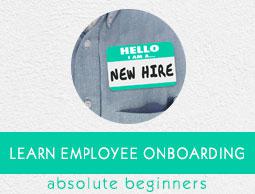Employee Onboarding - Different Cadres
In the previous chapter, we have understood different types of employee onboarding. In this chapter, we will be discussing about the employee onboarding for different cadres/designations/ranks/grades.
Following are the different onboarding types for different designations −
- Onboarding for Juniors
- Onboarding for Managers
- Onboarding for Directors
Employee onboarding cannot be the same for every employee in any organization. As the experience grows, the responsibility, respect and the treatment also changes and increases. Hence employee onboarding will be different for different employees as per their respective designations.

Employee Onboarding for Juniors
In the past, the responsibility for changing a newly-recruited stranger into a befitting and knowledgeable employee was left to the personnel department’s experienced clerk in the very first day orientation program. In this way, the employee was left to sink or swim her way to success from here.
Today, onboarding is the most recent addition to a manager’s checklist. Companies realize that there’s a high payoff in this unique early honeymoon period by making the new employee feel welcome and comfortable in her new surroundings, assuring the person that she’s made a good decision, and minimizing the time it takes to become productive members of her new workgroup.
Employee onboarding for a Junior are as follows −
Send out an e-mail to everyone in the office so they’re prepared to welcome a new employee.
Set up the computer and configure the new employee’s e-mail accounts. Provide guides for any necessary software he or she will be using.
Set up her phone system, and provide instructions for using voicemail and all other communication system required by the new hire to carry out his/her responsibilities effectively.
Have a stack of business cards waiting.
Designate a workspace and provide a name plate on his or her desk or office door as a tangible sign that you’ve prepared the space.
Help the newbie learn names and jobs. Make an informal org chart of your department that spells out who’s responsible for what. Include your boss and her boss, too, along with any other people your newcomer is likely to run into.
Finally, explain to the new hire your expectations about performance. A close review of your company’s performance appraisal form is one of the most important and most neglected onboarding tasks. A good job of onboarding can take weeks off the learning curve and get the new employee work up to fully-productive fast.
Employee Onboarding for Managers
Managers hold important and strategic positions in an organization. They play a decisive role in changing the fate of the organization. When it comes to hiring managers, you have two options −
- Hiring from outside
- Promoting from within
If you’re still in the very early stages, or if you have mostly inexperienced employees in your customer service team, you’ll probably end up hiring from outside your company.
There are a few downsides to hiring from outside your company. Among them, there’s data that shows that it’s more expensive, and that outside hires tend to leave sooner.
Outside hires also won’t have the same product knowledge as someone who came up through the ranks. The same is not the case while promoting from within. But, it depends on how long the new manager was in their previous position; they might have a harder time asserting authority over their previous teammates.
Employee onboarding for Managers are as follows −
Send them a management handbook. Anything that will give the new manager an idea regarding the company culture and policies will help them feel less awkward on their first day.
Providing other supplementary materials to put them at ease. The newly appointed managers can be provided with visuals showcasing how things are run in the organization.
Get the paperwork out of the way. If you can, send over any paperwork that needs reviewing and signing; this can save time on the first day.
Give them a “day before” meeting or call. Once they’ve had a chance to review some of the materials you’ve sent over, set up a time to chat before their first day. You can give them a rundown of what they can expect, and they can ask any questions that the employee handbook (or paperwork, etc.) brought up.
The broad idea is to make the new environment less overwhelming, by familiarizing the new manager with faces and ideas from inside the company.
Employee Onboarding for Directors
New directors face a steep learning curve, and the pressure to climb quickly is intense. In today’s rapidly changing business environment a new director must be brought up to speed on issues relating to the company and board culture as soon as possible to begin adding value.
Director’s Onboarding is as follows −
Director induction programs are usually run by corporate secretaries, sometimes with input from the chief human resources officer.
If the new board member has had some prior general training in the role of a director, the induction can focus on the company, its products, services, and key players, the wider business context, and the culture of the board and how it operates.
The new director should ideally spend some time at company headquarters with senior executives.
New board directors should be encouraged to make site visits to see as much of the company’s operations on the ground.
Boards also may contemplate having an informal mentor program that pairs a new director with a more experienced director who can provide perspective on boardroom activities.
Ideally, a new director without previous board experience will participate in a general director training program. It will give him the opportunity to become more familiar with the role of the board and individual directors, important governance regulations and listing requirements, and the governance issues affecting the boardroom today.



